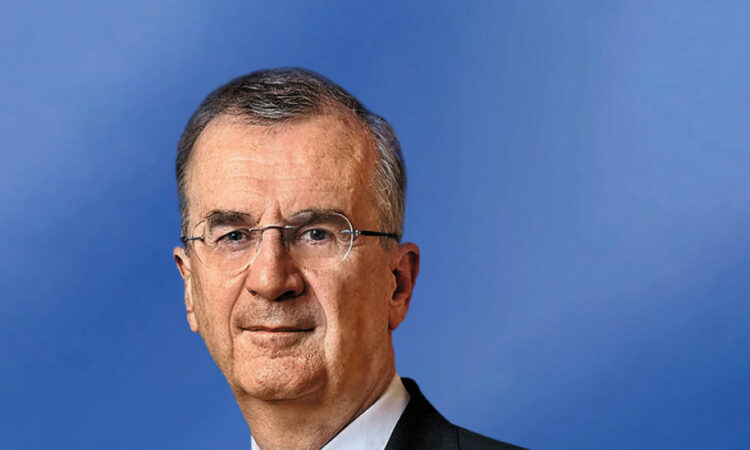
I would suggest forging a link here with another lever that is often mentioned but has made little progress – namely securitisation. We have a massive need for investment in mobility and energy infrastructure, and we have the basis for a common label thanks to EuGBs. Combining these two factors in green securitisation, around a common European securitisation platform, is probably the best solution in the face of political reticence and fears over financial stability. To accompany the development of green finance, in the long run the use of labels could be made mandatory for all instruments deemed sustainable, and controlled by external entities supervised by the ESMA to avoid greenwashing. Moreover, the specific characteristics of tokenisation such as transparency and programmability could prove particularly promising in the field of green finance thanks to the automated integration and verification of ESG criteria in smart contracts.
4. Turning to governance, as the old proverb says “too many cooks spoil the broth”. In the same vein, Europe’s capital market integration is hindered by the fragmented application of EU rules, implemented by several national regulators. Hence Christine Lagarde’s call for a “European SEC”, xvii with which I fully concur. We should seriously consider granting more supervisory power to the ESMA, at least over systemic cross-border entities. As a first step, we could offer an opt-in mechanism to such entities, which would greatly benefit from a single supervisory regime. It also means implementing a single rulebook on capital markets and associated areas. Moreover, Europe should take the lead in emerging areas, as has been the case for MiCA or for ESG rating agencies, to ensure a unified legal framework from the outset.
This Financing Union for Transition is certainly a decisive economic and financial project, but it carries higher political significance. Ultimately, a strong and deep Financing Union will be key to ensuring Europe’s strategic autonomy, unlocking and channelling its key domestic resource – private savings – to our priorities in a troubled and fragmented world, to which the upcoming elections add another layer of uncertainty. Let us not miss our chance and move forward as soon as possible, in the next European legislative term. Rest assured that we, central banks, will do everything in our power to make this Financing Union a reality. Thank you for your attention.
iHans Christian Andersen, The Ugly Duckling, 1843.
iiNew Financial, EU Capital Markets : a new call to action, September 2023.
iiiChristine Lagarde, A Kantian shift for the capital markets union, speech at the European Banking Congress, 17 November 2023.
ivLaunch of a French task force on the reboot of the Capital Markets Union, press release, 8 January 2024.
vRobert Mundell (1973). Uncommon arguments for common currencies. The economics of common currencies, 114-132 ; Pierfederico Asdrubali, Bent E. Sørensen, Oved Yosha (1996), Channels of Interstate Risk Sharing: United States 1963–1990, The Quarterly Journal of Economics, Volume 111, Issue 4, November 1996, Pages 1081–1110.
viEuropean Commission, 2023 Strategic Foresight Report – Sustainability and people’s wellbeing at the heart of Europe’s Strategic Autonomy, July 2023.
viiCurrent account balance.
viiiGopinath, G., Europe in a fragmented world, speech, 30 November 2023.
ixEnrico Letta on the Future of the Single Market, 15 September 2023.
xJean-Baptiste Gossé, Vincent Jamet, Elsa Lamy, Aubert Massengo, Speeding up the process of harmonising European insolvency law to strengthen financial integration, Bulletin Banque de France, 23 January 2024.
xiNew Financial, ibid.
xiiHsu et al. (2014) show that the innovation level is disproportionally higher in countries with better developed equity markets, especially for industries that are more high-tech intensive. Hsu, Po-Hsuan, Xuan Tian, and Yan Xu. 2014. “Financial Development and Innovation: Cross-Country Evidence.” Journal of Financial Economics 112 (1): 116−35.
xiiiBrown, James R., Steven M. Fazzari, and Bruce C. Petersen. 2009. “Financing Innovation and Growth: Cash Flow, External Equity, and the 1990s R&D Boom.” The Journal of Finance 64 (1): 151−85
xivEuropean Investment Fund, Annual Report 2022, April 2023.
xvBIS Annual Economic Report, Chapter III. Blueprint for the future monetary system: improving the old, enabling the new, 25 June 2023.
xviSustainable Finance Disclosure Regulation (SFDR) et Corporate Sustainability Reporting Directive (CSRD).
xviiChristine Lagarde, ibid.





